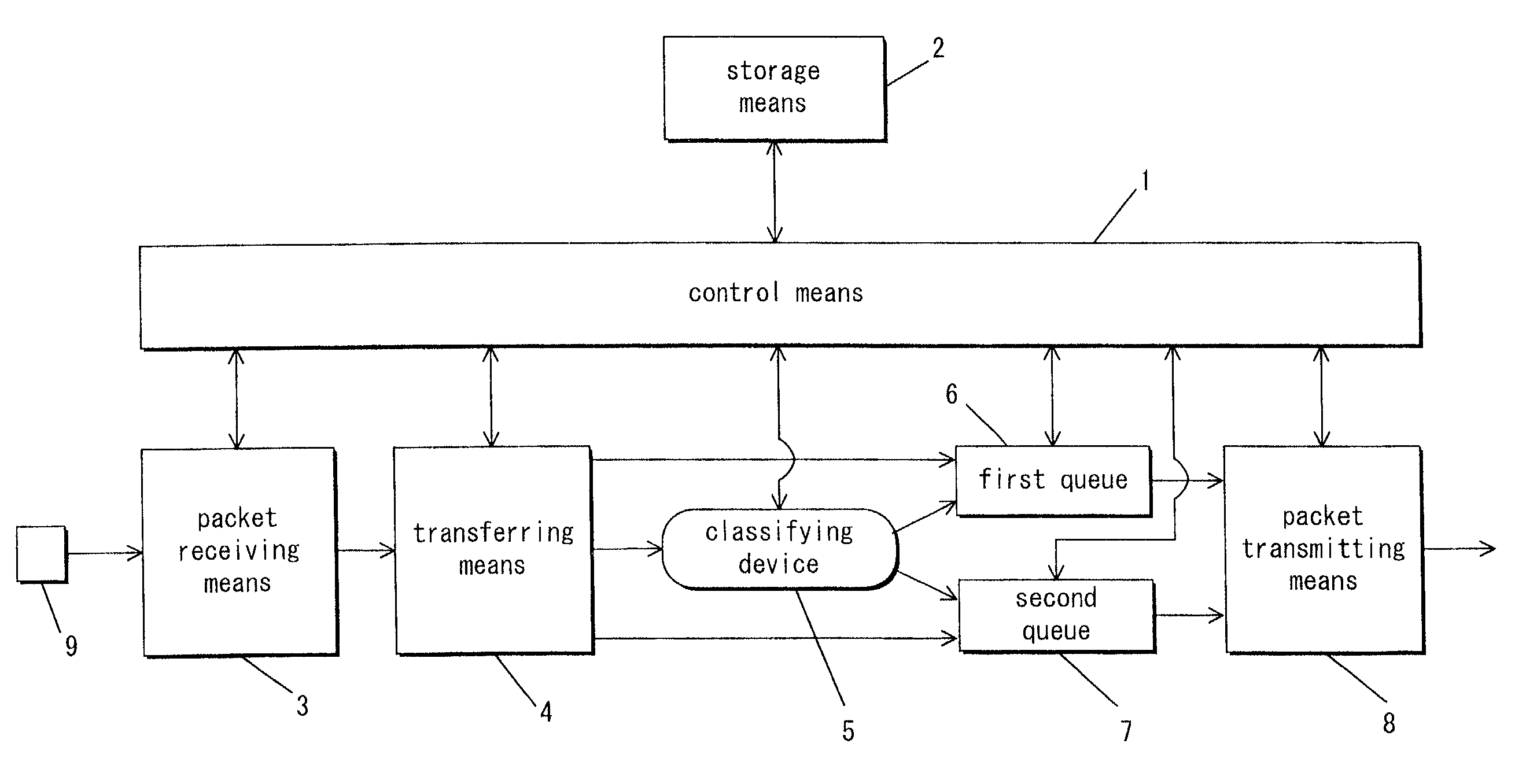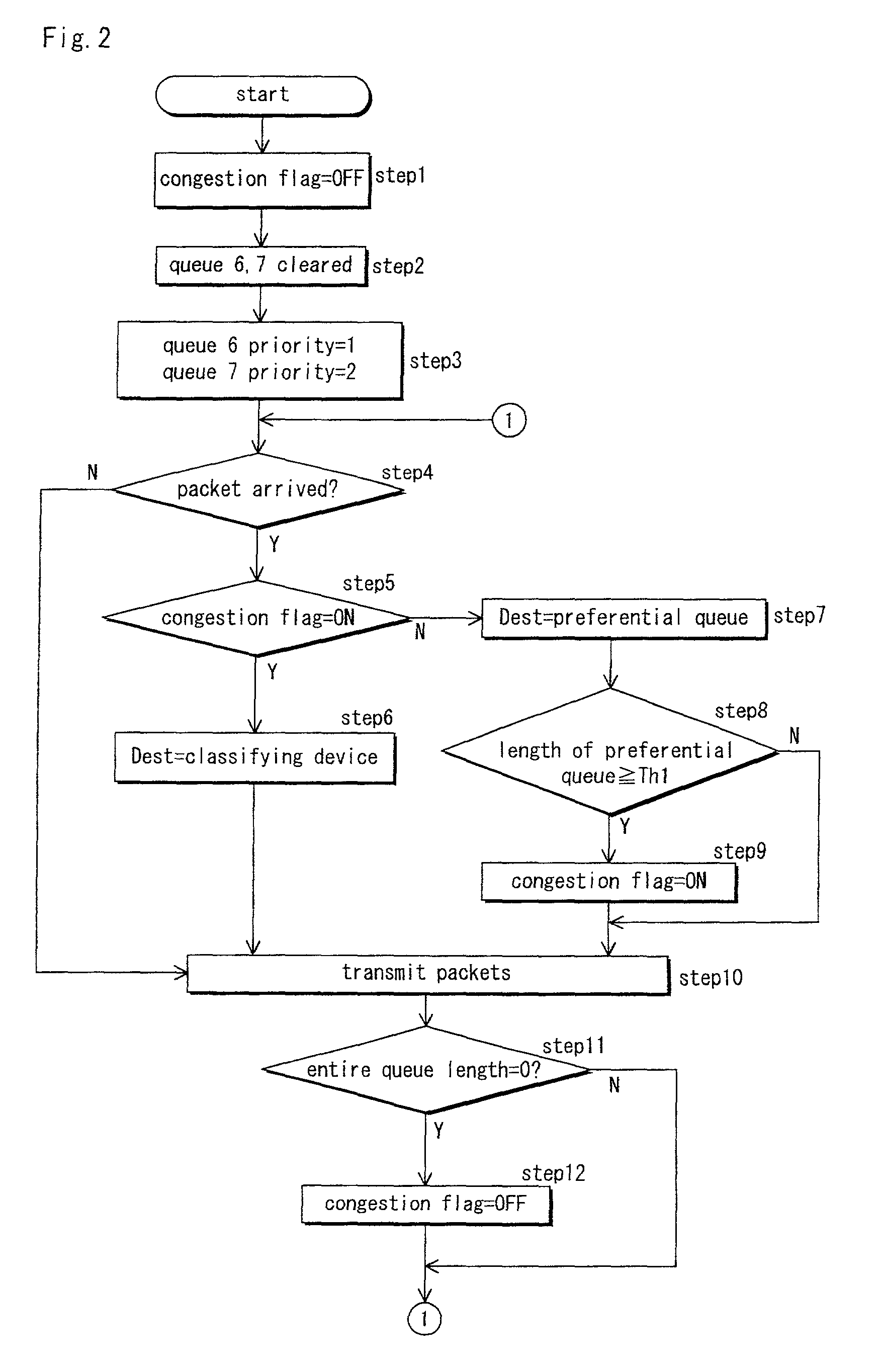Apparatus and method for packet transmission
a packet transmission and apparatus technology, applied in the field of packet transmission apparatuses, can solve the problems of large processing overhead, unavoidable time loss due to classification, and enormous processing burden, and achieve the effect of improving processing speed
- Summary
- Abstract
- Description
- Claims
- Application Information
AI Technical Summary
Benefits of technology
Problems solved by technology
Method used
Image
Examples
embodiment 1
[0049]Processing in Embodiment 1 is hereinafter described with reference to the flowchart of FIG. 2.
[0050]First, when operations start, the control means 1 carries out pre-processing in steps 1 through 3. The control means 1 turns off a congestion flag in step 1, and clears and empties the first queue 6 and the second queue 7 in step 2. In step 3, the control means 1 sets the priority of the first queue 6 to “1” (preferential), and sets the priority of the second queue 7 to “2” (non-preferential).
[0051]Thereafter, the control means 1 checks whether or not the packet receiving means 3 has received an arriving packet in step 4. If not received, the processing stage moves to step 10. If received, the processing stage moves to step 5.
[0052]In step 5, the control means 1 checks whether the congestion flag is on or off. If the congestion flag is on, the control means 1 sets the destination at the “classifying device” in step 6, and the processing stage moves to step 10. If the congestion ...
embodiment 2
[0071]Processing in Embodiment 2 is hereinafter described with reference to the flowchart of FIG. 10 and the process-explaining drawings of FIG. 11 through FIG. 13. Unlike in Embodiment 1, the priority of each queue is switched in Embodiment 2 when a predetermined condition is fulfilled. Although the switching of the queue priority inevitably makes the processing slightly more complex in this Embodiment than in Embodiment 1, an advantage resides in that a shift to the non-congestion state is carried out earlier so as to lengthen the time during which classification is omitted. This increases the processing speed.
[0072]First, when operations start, the control means 1 carries out pre-processing in steps 21 through 24. In step 21, the control means 1 judges that the present condition is a non-congestion state, and turns off the congestion flag. In step 22, the control means 1 clears and empties the first queue 6 and the second queue 7. In step 23, the control means 1 sets the switchin...
PUM
 Login to View More
Login to View More Abstract
Description
Claims
Application Information
 Login to View More
Login to View More - R&D
- Intellectual Property
- Life Sciences
- Materials
- Tech Scout
- Unparalleled Data Quality
- Higher Quality Content
- 60% Fewer Hallucinations
Browse by: Latest US Patents, China's latest patents, Technical Efficacy Thesaurus, Application Domain, Technology Topic, Popular Technical Reports.
© 2025 PatSnap. All rights reserved.Legal|Privacy policy|Modern Slavery Act Transparency Statement|Sitemap|About US| Contact US: help@patsnap.com



